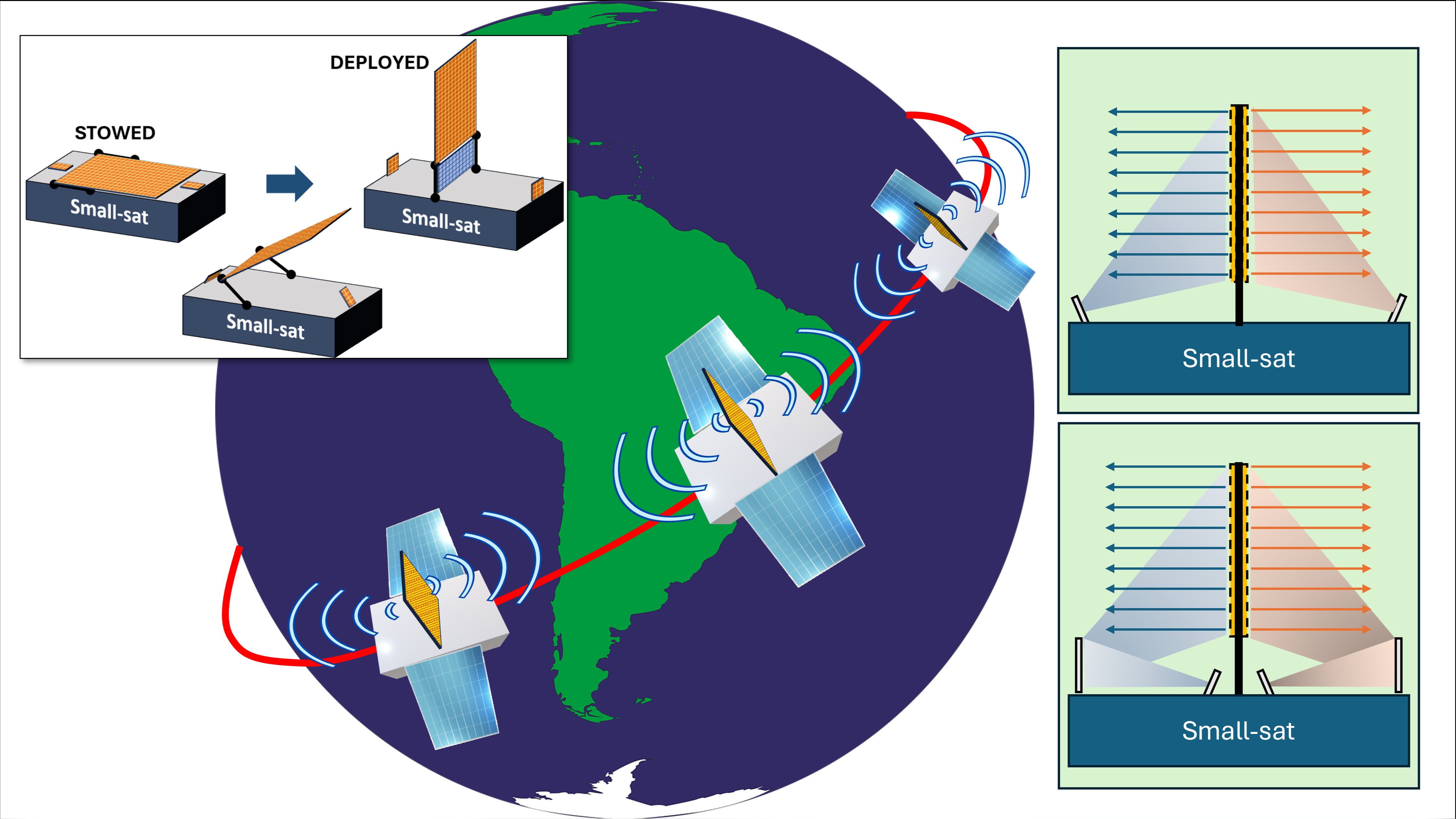Duration: 18 months
A compact antenna system is proposed to enable broadband inter-satellite links (ISLs) between satellites in the same orbit for Low Earth Orbit (LEO) constellations.
The antenna establishes high-throughput links with both the preceding and following satellite in the orbit. Such a system significantly reduces communication latency as it eliminates the need for satellites to wait until they are within the range of a ground station to relay data back to Earth. This idea can serve a wide range of missions requiring low-latency communications, such as real-time Earth observation for environmental or emergency monitoring.
The antenna system is based on a passive spatially-fed array with simultaneous forward and backward radiation. The antenna consists of two identical reflectarrays placed on opposite sides of a flat panel, which provides an easily foldable and compact antenna solution, meeting the spatial constraints of small satellites.
The inter-satellite links will be evaluated in Ka-band, from 22.55 to 33 GHz with bandwidths about 500 MHz, and also in Ku-band (11.7 - 12.7 GHz) or other bands of interest. The peak gain will be about 28 dBi (below 30 dBi to guarantee a proper orientation given the pointing accuracy of small satellites). It will allow high data rates (>300 Mbit/s), efficient power consumption and a compact solution (the reflecting surface would be a single flat panel of about 20 cm x 20 cm). The required directions of radiation are computed for a LEO orbit with around 10 satellites per orbit, considering 12U or 16U CubeSat-class satellites to assess the available room for the antenna system.
The work will include an analysis of risk factors related to the antenna performance, and a functional prototype with the proposed electrical antenna requirements.
Space missions have tested similar antenna technology but without simultaneous forward and backward radiation. The potential of this application and the results to be achieved could lead to a patent.

